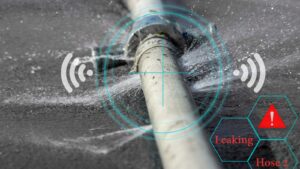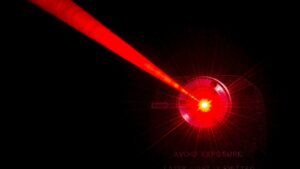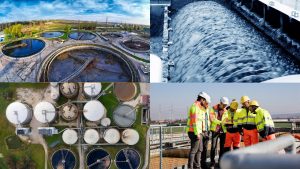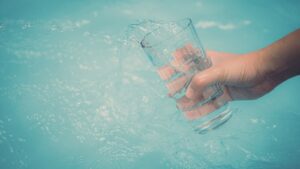A business may incur expenses that can be allocated as capital or revenue expenditure. Also known as depreciation allowance, capital allowance refers to the money directed towards a company’s long-term growth. As this amount of money cannot be deductible from trading profits, a business receives tax relief in the form of capital allowance. Hence, capital allowance can be seen as a tax incentive to invest in plants and machinery. This aims to reduce taxable profits by claiming tax relief on plants and machinery. This blog will offer an introduction to any company that is new to capital allowance.
A business may incur expenses that can be allocated as capital or revenue expenditure. Also known as depreciation allowance, capital allowance refers to the money directed towards a company’s long-term growth. As this amount of money cannot be deductible from trading profits, a business receives tax relief in the form of capital allowance. Hence, capital allowance can be seen as a tax incentive to invest in plants and machinery. This aims to reduce taxable profits by claiming tax relief on plants and machinery. This blog will offer an introduction to any company that is new to capital allowance.
What is Capital Allowance?

- Annual Investment Allowance (AIA) – Limited to the first year where assets are purchased.
- Writing Down Allowance (WDA) – Alternative tax relief for company assets not qualifying under AIA within the first year. It may include short-life assets such as vehicles or whole-life assets like heating systems.
- Enhanced Capital Allowance (ECA) – Primarily introduced to encourage or influence companies to purchase plant and machinery that costs low energy and has a low carbon footprint.
Different Types of Capital Allowance

Capital allowances are calculated depending on the different types of expenditure. Contrary to the perception that capital allowance is limited to plant and machinery, there are other forms. While AIA, WDA and ECA are regarded as three of them, here are other forms of capital allowance explained in detail:
Plant and Machinery
This form of capital allowance refers to assets like industrial machinery, computers, furniture, tools and other materials that are required to keep a business functioning. As a result, the costs used to purchase, repair or demolish such objects and set up fixtures or fittings like CCTV cameras or washroom facilities, the type of plant and machinery items are wide-ranging.
Any alterations that are further required to be carried out in a building to accommodate any installation are regarded under this category. Hence, fixing A/C, heating and lighting systems would be valid considerations that must be taken into account. Plant and machinery, however, will not include any rented or leased item or certain types of permanent assets like roads or bridges. It also does not include land or elements like doors or gates. It should be noted that the capital allowance of plant and machinery will differ on whether it belongs to the main pool or special rate pool category, both of which rely on the nature of the item and its life cycle. Typically, however, they would fall under the main pool.
Commercial Buildings and Large Structures / Structures and Building Allowance
This is more clearly regarded as a category under the United Kingdom, although this is a typical capital allowance category in many jurisdictions. Here, the quantified expenditure includes structures and buildings and any incidental expenditure. The latter refers to any expenditure used to demolish, upgrade, renovate or alternate in the building or the land to facilitate the construction. This does not however mean that any expenditure directly incurred exclusively on the land will amount to capital allowance. Rather, it is any alteration that was required to either construct a building or install some form of structure. Since this is considered separate, companies cannot combine this expenditure form with plant and machinery allowances. There needs to be a clear segregation between the expenditures incurred for both.
Businesses have to rely on each country’s property laws to determine whether they can gain capital allowance in this respect. While the residential property is excluded from claiming such allowance if the property is used for a mixed role as a commercial and residential unit, relief is provided on a reasonable basis based on the amount apportioned to a non-residential use.
Research and Development
This category of allowances has a tendency to be less prioritised or overlooked by businesses. However, research and development capital allowance (RDA) is a valuable tax relief mechanism. This offers a full tax deduction on assets used as part of research and development.
An important aspect of assets belonging to this category is that it is time sensitive. Hence, unless items part of research development are not claimed by the first year, the capital allowance cannot be taken. While the generalised notion is that anything under research and development comes under this category, the types of assets deemed quantifiable expenses are restricted. Hence, only plant and machinery equipment, property, construction or renovation on the property, and expenditure incurred on company or staff vehicles would be regarded. It should be noted, however, that any research and development project includes only those that aim to advance in science or technology. This does not at the same time mean that it has to be an invention, but rather approach problems in a different manner.
Why Should You Care About Capital Allowance?

The rules of capital allowance may differ from country to country. Generally, most capital allowance can only be obtained by sole traders, partnerships, limited companies and commercial property investors. They cannot be obtained for residential properties. However, almost any company in the globe may experience most of the below benefits:
Reduce the Amount of Tax Payable
Every year, governments require companies to pay their taxes. This is particularly relevant to companies in the private sector that have a higher gross profit. No matter how wide the margin between the incurred and profitable costs, taxes would apply. A great way to reduce the tax burden is through capital allowance. It thus becomes a valuable tax relief that many may find difficult to understand, thereby possibly missing out on the advantages a capital allowance tax relief provides.
It is not Time-Bound
Many businesses believe they have lost capital allowance benefits after one year. In reality, it is possible for a company to claim purchases that back date several years. Hence, instead of being limited to availing capital allowance that was taken from a year of the purchase, where it concerns building costs, an organisation may be able to claim tax relief even if an item was purchased a year back. Note, however, this would mostly depend on whether the items are still in use.
Extends to Businesses That Word Fully Remote
Companies no longer have to have a physical space to benefit from capital expenditure. Even remote teams can avail of this advantage by submitting a capital allowances claim for assets like laptops. For example, consider that a company invests in multiple laptops for its employees to enhance their remote team’s ability to carry on work uninterrupted. Consequently, such assets would be regarded as capital investments. Therefore, a great aspect of capital expenditure is that it extends to a wide range of industries, whether they work in-person or fully remote.
Stay Informed to Save the Overall Costs of Your Organisation’s Expenditure
Governments would generally not carry out awareness campaigns to inform businesses of capital expenditures. This is because countries rely on corporate taxes for the functioning of government and hence would have no interest in reducing the amount taxable by a business. Consequently, it remains within an organisation’s responsibility to ensure they have done the relevant research and guarantee to submit their capital allowance claims in advance so they do not have to lose the profit they have worked hard to accumulate ultimately. Generally, having a thorough accountant or lawyer would ensure a business is well aware of such aspects. Regardless of whether you are a large or a small business scale business being aware of this information is integral.







